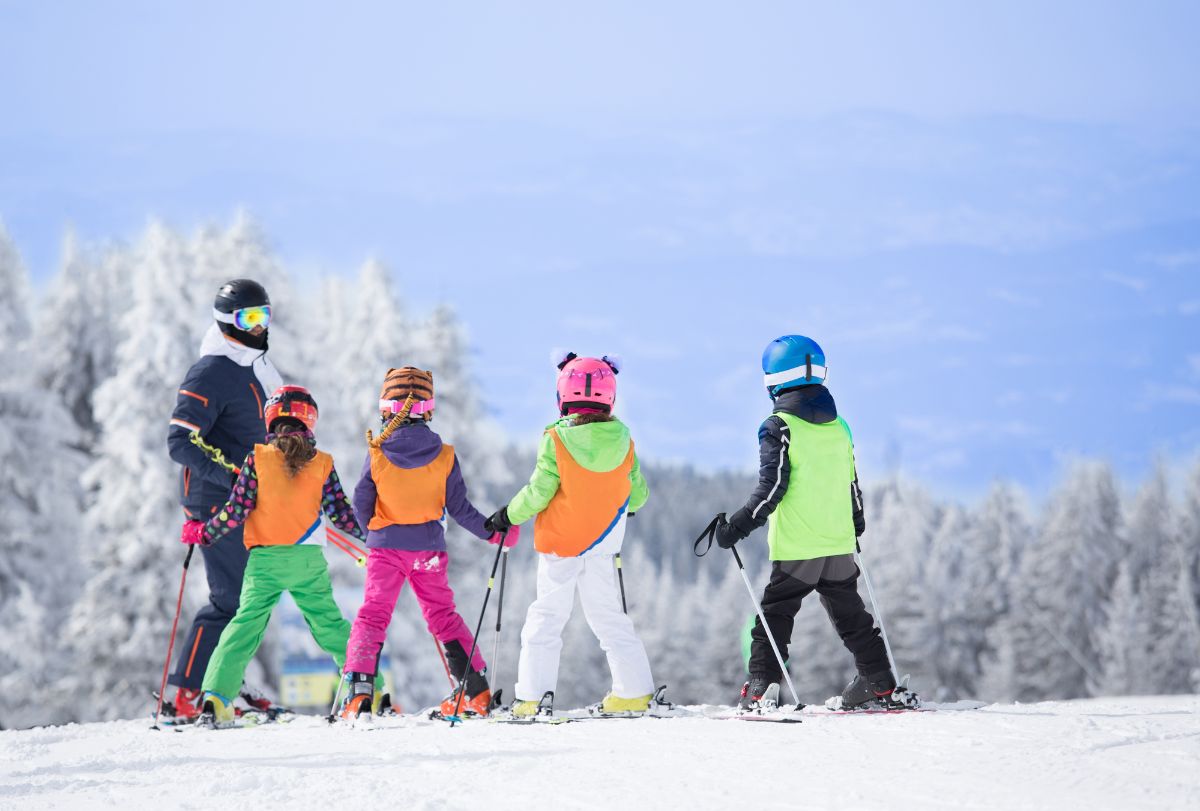
You should try skiing! No, really, you should. Before you protest that it seems so difficult to learn, look into taking ski lessons at the beginner, intermediate, or expert level, in large or small groups or one-on-one.
Living in climates where seasons change, spending time outdoors should be all about taking advantage of what’s great about each of them.
Make time for bike rides and strolls through lush gardens in spring, water sports in summer, hikes to find choice pumpkins in fall, and finding ever more inventive ways to swish through the snow in winter.
So many exciting sports and hobbies manage to scare away those who think they have to be in elite physical shape or gifted with exceptional coordination to try them.
People might fear their compressed air tanks will fail them underwater when scuba diving, they’ll capsize and drown while kayaking, or they’ll careen into a tree or off a cliff while skiing.
Slim possibilities exist for all of these catastrophes just as they do for the possibility of a car accident on the way to work or a plane crash while on vacation.
In reality, taking matters into your own hands and investing a little time into learning the proper ways to do these things correctly and successfully makes them as safe as anything else.
In particular, skiing holds appeal for daredevils and cautious folks alike. If you love roller-coasters and crave the thrilling stomach drop you get when speeding down a hill, you’ll find no shortage of those moments on a ski vacation.
Or, you can just as easily spend all your time coasting down the gentle slopes of beautifully wooded trails, taking in the scenery of frosted pine trees and vast open sky.
My grandfather enjoyed competing in downhill and slalom races until he was 90 years old, and even then, stopping was like giving up an addiction.
Master the initial skills with a professional and you’ll not only be safer as you explore your new hobby but you’ll be able to spend less time preparing and get out on the trails faster.
What Do Ski Lessons Include?
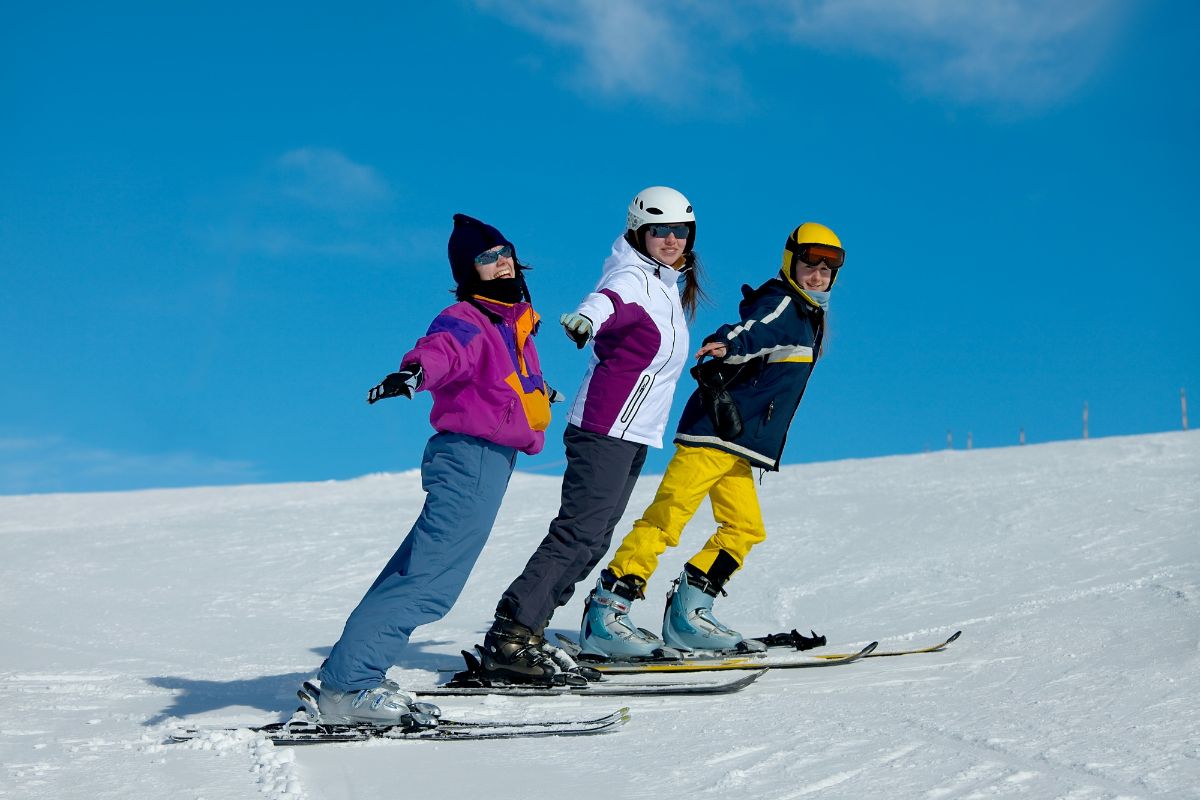
When you’re on skis you’ll want to be able to stand up in them, and to stay standing as you move. You’ll also want to get yourself back to a standing position when that inevitable fall comes. You can also easily learn to fall in such a way that doesn’t involve a crash landing.
But perhaps most importantly, you’ll need to know how to stop on skis. Watching televised stunts or just gazing down from the top of a steep mountainside slope might convince you that even novice level skills will prove scary during the learning process.
Truthfully most of the tactics mentioned are simply a matter of leaning and balancing your weight in different ways and growing accustomed to the bulk of skis and ski boots on your ankles.
From there, there’s a whole host of abilities you might want to add depending on the kind of skiing you enjoy most. The sport offers great exercise even at the beginners’ level, but you can try cross-country skiing for an entertaining way to get massive amounts of cardio.
Thrill-seekers can learn jumps, and those who might like to work their way up to entering races or just master greater control on skis can check out slalom lessons, which teach you to zig-zag around poles without sacrificing speed.
However far you choose to go when making skiing your new hobby, you’ll save yourself time and effort by seeking the help and supervision of an expert.
With ski lessons your initial experiences are much more likely to be positive ones and you’ll end each day excited for what’s ahead instead of frustrated and tempted to quit because lack of ski lessons.
Ski Lessons Based On Group Size
As all good leaders are, your instructor is trained to meet you on the level you’re on and help you grow from there, picking up on things like the way you best communicate and learn.
Do you prefer individual attention or the camaraderie of accomplishing things in a group? Various factors weigh into how individualized you want to get with your ski lessons, such as cost, but we’ve outlined the different types based on group size.
1. Ski School
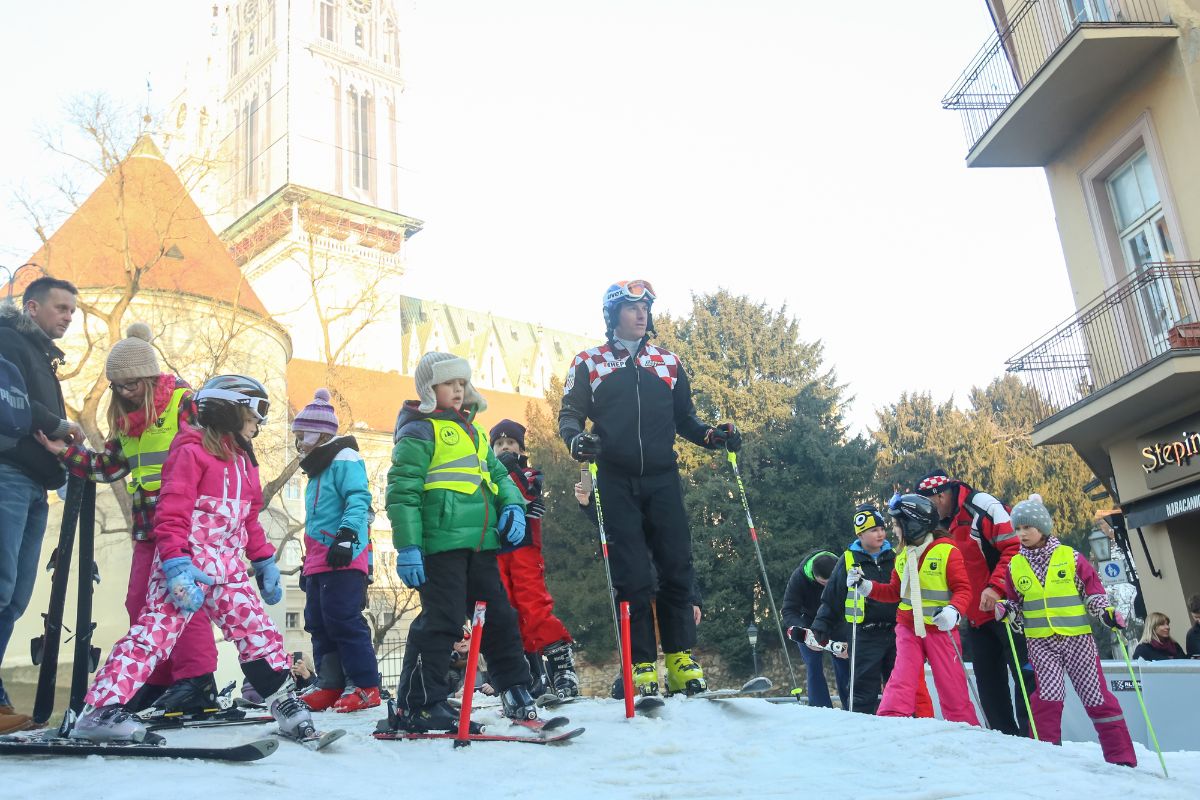
You’ve likely heard tales of adults fumbling to find their way down beginner ski slopes, humiliated when a neat single-file line of youngsters with tiny skis and tasseled toboggans whizzes effortlessly past them.
Take heart—no matter how tall you are or what your age, you can number among those pint-sized skiing savants! Seriously, there’s no shame in taking lessons in a big group with other beginners of all ages.
Instructors of these large groups known as ski schools are well-versed in catching adults and children alike when they fall and making it fun to learn the basics, which is the best way to learn no matter how old you are.
In ski school, typically the first thing you’ll cover is how to stop, which should make you feel more comfortable right off the bat. Mastering how to slow and stop the motion of your skis gives you the confidence to know you can keep yourself from sliding downward into descents you don’t feel ready to handle yet.
You can avoid collisions with trees or other skiers. When it feels like you’re getting out of control you’ll be taught how to lean into a fall in a way that protects your knees and ankles from stress, strain, or in the worst cases, sprain or breaking.
You’ll learn to easily pick yourself up from a fall, which can initially feel daunting when getting used to the weight of skis strapped onto your feet.
Covering as much distance as you do in mere seconds while skiing, your day will involve making frequent use of chair lifts. Knowing how to safely use these is a must, but it’s easy to learn under the tutelage of a professional.
The lifts move more slowly on beginner slopes, or ‘bunny slopes’, which you’ll find to be much more forgiving as you’re starting out. When you become proficient at stopping and controlling your movements on skis, you’ll have no problem staying put at the designated spot while the chair lift swings around to pick you up.
Dismounting requires you to coast down a tiny snow-covered dune, which should actually make you feel much more secure about the whole process since it’s placed there to give everyone plenty of momentum while offloading, letting them easily ski out of the way of the next approaching chair.
Your instructor will also introduce the basics of executing turns on skis. Learn which way to lean, how to shift your weight around on your skis, and you’ll grasp this in no time.
Your turns don’t have to be smooth and polished right away in order to enjoy time on the slopes; you’ll have plenty of time to perfect this later.
Instructors for ski schools know that the introduction to this sport can make or break a student’s hunger and willingness to go on. They know how to keep things light and create a fun atmosphere for everyone, and learning in a group tends to contribute to this entertaining spirit.
Skills like boarding and dismounting the chair lift are actually so simple to learn that it takes only a few ski school instructors to safely and efficiently guide a large class on and off of them, so keep this in mind.
2. Group Lessons
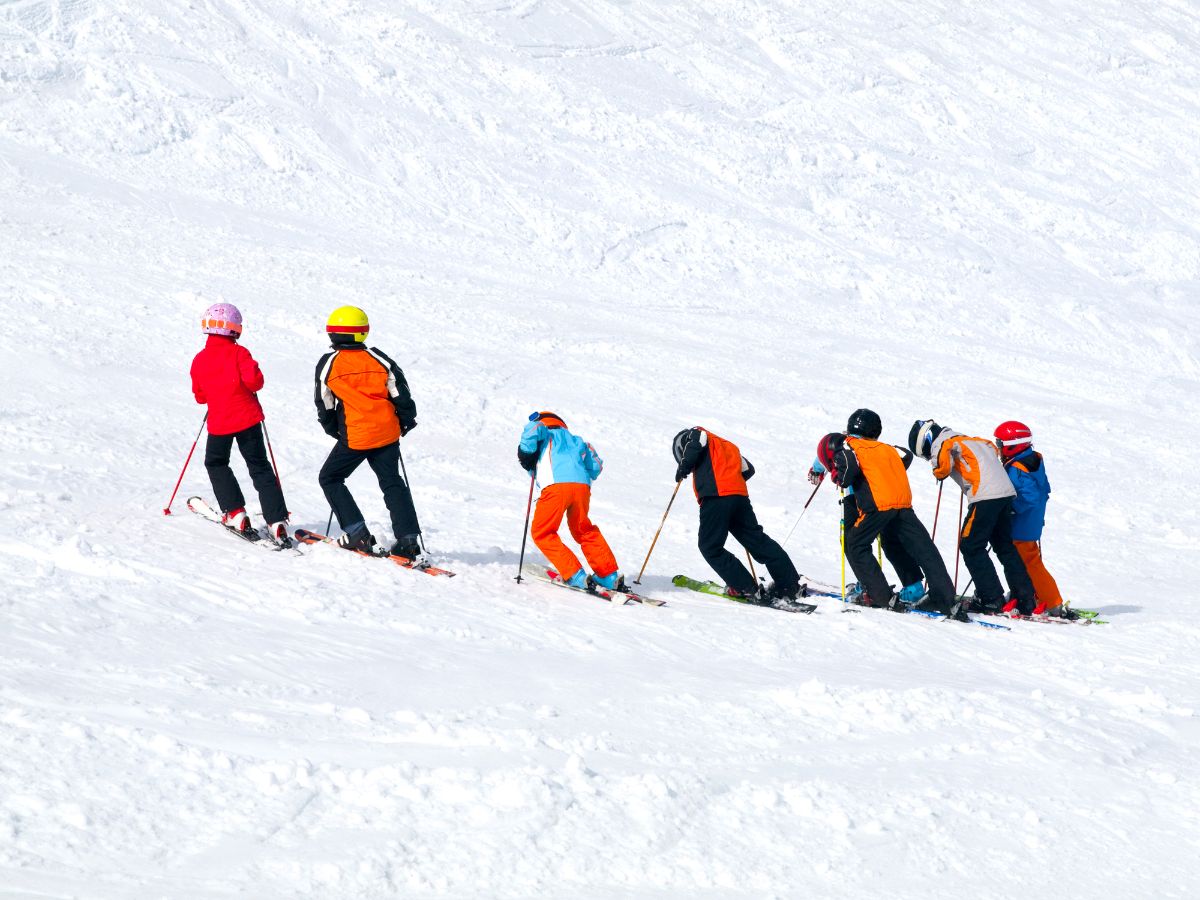
While you can certainly ski safely on beginner trails after getting the basics under your belt, you may want to quickly move on to gradually steeper trails of the intermediate level.
You can do this with practice, but guidance from an expert will get you there faster and probably with a greater level of confidence. You can usually find lessons conducted in small groups, with a smaller number of students than a ski school, for all skier levels, where you can start at the beginning or add to the abilities you already have.
In lessons with smaller groups the instructor can tailor things more to your level without having to ensure all members have completed a given task before moving on.
Remember that learning to ski usually includes some falls, and when you’re starting out you’ll probably need a helping hand to pull you up. Physical assistance for students—hands-on instruction—takes more time than classes that involve strictly conceptual lessons, so you’ll benefit from more of your instructor’s time per student.
These lessons will of course be a bit more costly than ski school, so you should weigh whether it’s worth it for you.
3. Private Lessons

If you want the best chance at getting the most out of a lesson, you may want to pay for individual instruction from a professional.
You’ll probably advance through a skill set much more quickly when your tutor only has to keep track of one student’s progress, and the guidance as well as the assessment of how well you’re picking it up will be very fine-tuned.
You’ll likely develop a rapport with your teacher and they will be even more invested in seeing you do well and enjoy your time on the mountain.
Particularly if you want to take your skills to the highest possible level, the benefits you’ll reap from individual professional lessons will be worth the money.
You’ll get an instructor who specializes in the particular type of skiing you want to learn, whether it be ski jumps, slalom, mogul skiing, or cross-country.
It won’t take very much time on a one-on-one level to get you up and going toward your goals, and your instructor will naturally pick up on nuances of how you learn and communicate.
Of course, private lessons will be the most expensive type, but they may very well be within your budget and represent the most efficient way of learning.
Ski Lessons Based On Skill Level
4. Beginner
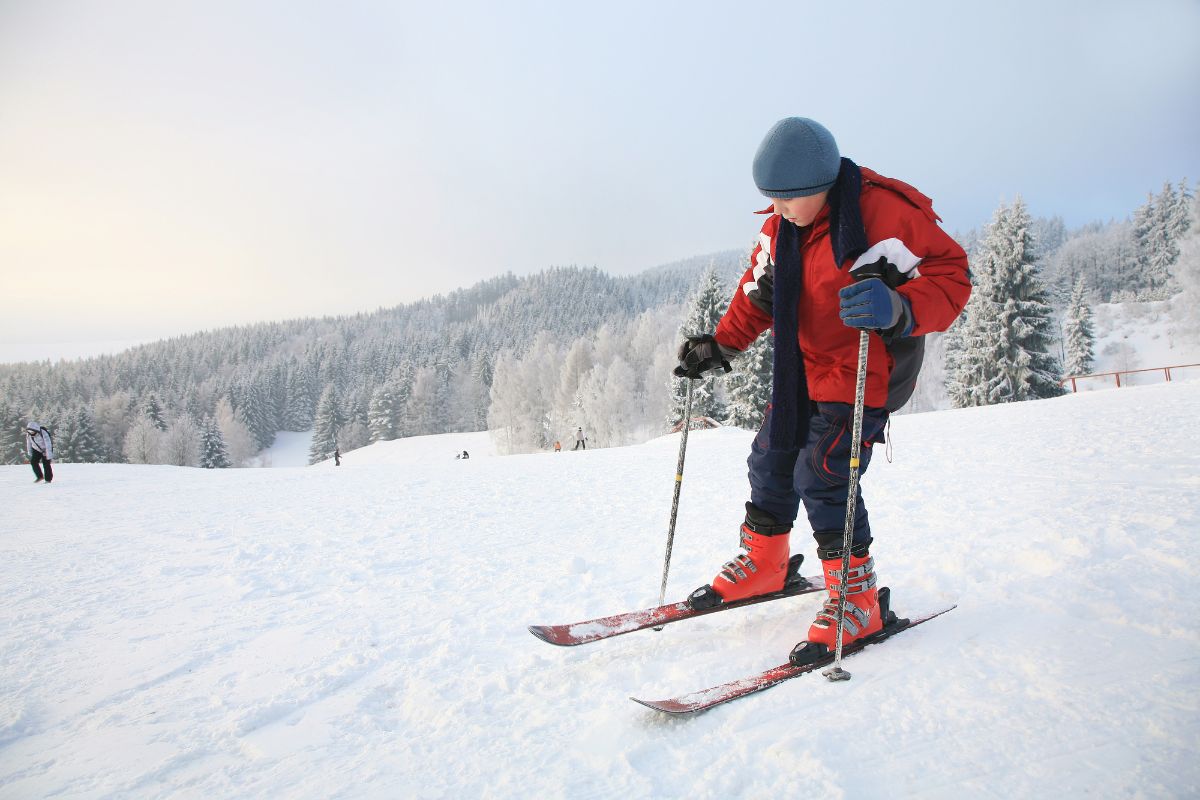
However you choose to go about your introduction to this exciting winter sport, most ski resorts offer your choice of beginner lessons in every group size, from large groups to individual instruction.
You’ll learn those skills that help you stand up and get moving on skis, and keep yourself from moving when you need to.
The first rule of the skiers’ code of conduct tells you to keep yourself in control so that you can stop at any time and avoid hitting anything so you won’t hurt others or yourself. All the beginner ski skills help you accomplish this one, which is very fortunate for everyone you share the trails with.
You’ll learn how all the equipment works, which extends from the huge chair lifts hauling you up the mountain over and over so you can hurtle yourself down again to the clasps on your ski boots and the devices that lock your boots to your skis.
You’ll also be exposed to trail designations and their symbols. Easy trails are represented by a green circle, intermediate are labeled with a blue square, and the steepest and most challenging trails get a black diamond for their symbol.
You’ll probably be reminded of the obvious, which is to observe all posted signs and keep off of trails marked with ‘closed’ signs.
5. Intermediate

Choosing intermediate level lessons will build on initial skills and perhaps take a closer look to be sure you’re truly doing everything right before moving on. You’ll learn to make smooth turns and better control all your movements.
More of the mountain will open up for you once you feel comfortable on intermediate level slopes as well as bunny slopes, and you can explore different pathways going down the mountain with a mix of the two while viewing more wintry scenery.
You’ll be able to add to your knowledge of the skiers’ responsibility code as well, like yielding to skiers ahead of you when starting a descent or merging onto a trail.
You can find intermediate level ski lessons in a smaller group or individual size.
6. Expert

A professional will lead you through skills on how to bolt down the steepest slopes, carving tight and concise turns around moguls and keeping a strong sense of control over your motion at extremely fast speeds.
Instead of playing defense and being prepared to slow or stop at difficult terrain, you’ll learn to ‘attack’ the mountain, dropping your posture into the crouch you often see professional skiers on television adopt.
Unafraid now, you’ll lean forward and really let your strong leg muscles do the work of throwing your weight from side to side, sculpting turns.
Skiers who excel to this level no longer use the same method of stopping they learned as a beginner, which is to take a pigeon-toed stance and bring the front tips of their skis together—instructors teach children this method by calling it “making pizza”.
Expert skiers often keep their skis in tight parallel formation and stop by making a tight turn to one side. And if they’re anything like my father, they’ll use that tight little turn to spray their waiting daughter with snow and then employ very bad acting to pretend it was accidental.
At this level of lessons you’re probably working with a professional one-on-one, but you can also find small groups to practice with.
Of course, it’s more difficult to stay together as a group at this level, so that’s one advantage of individual lessons. In a group, however, you’ll have convenient help close by if you do take a spill, and it can be great fun to challenge each other and get competitive.
In most regions you can’t ski year-round, so if you aspire to bring your ski skills up to expert level it’s a great idea to seek a professional’s guidance and get lessons to make the most out of the time you get each winter.
